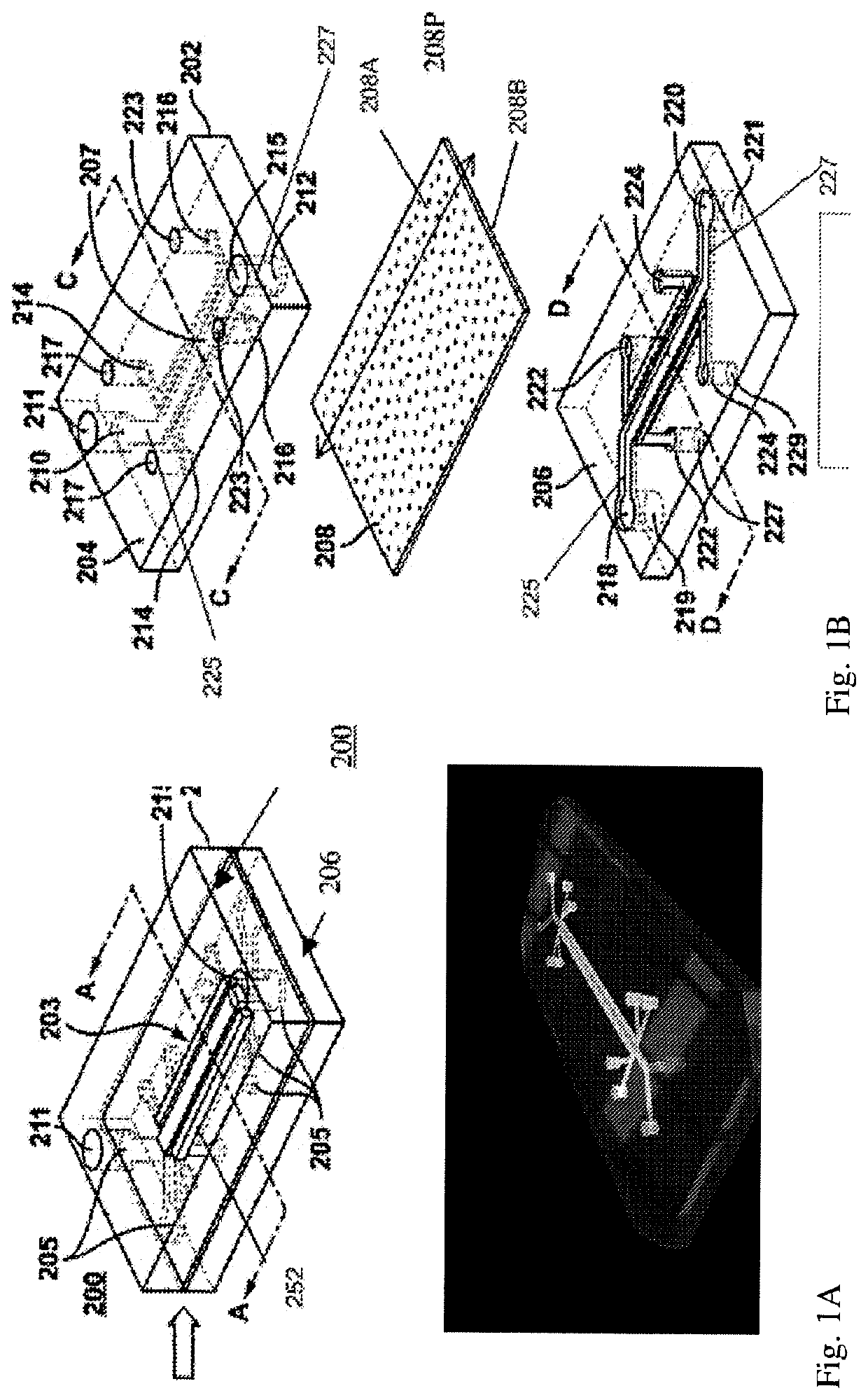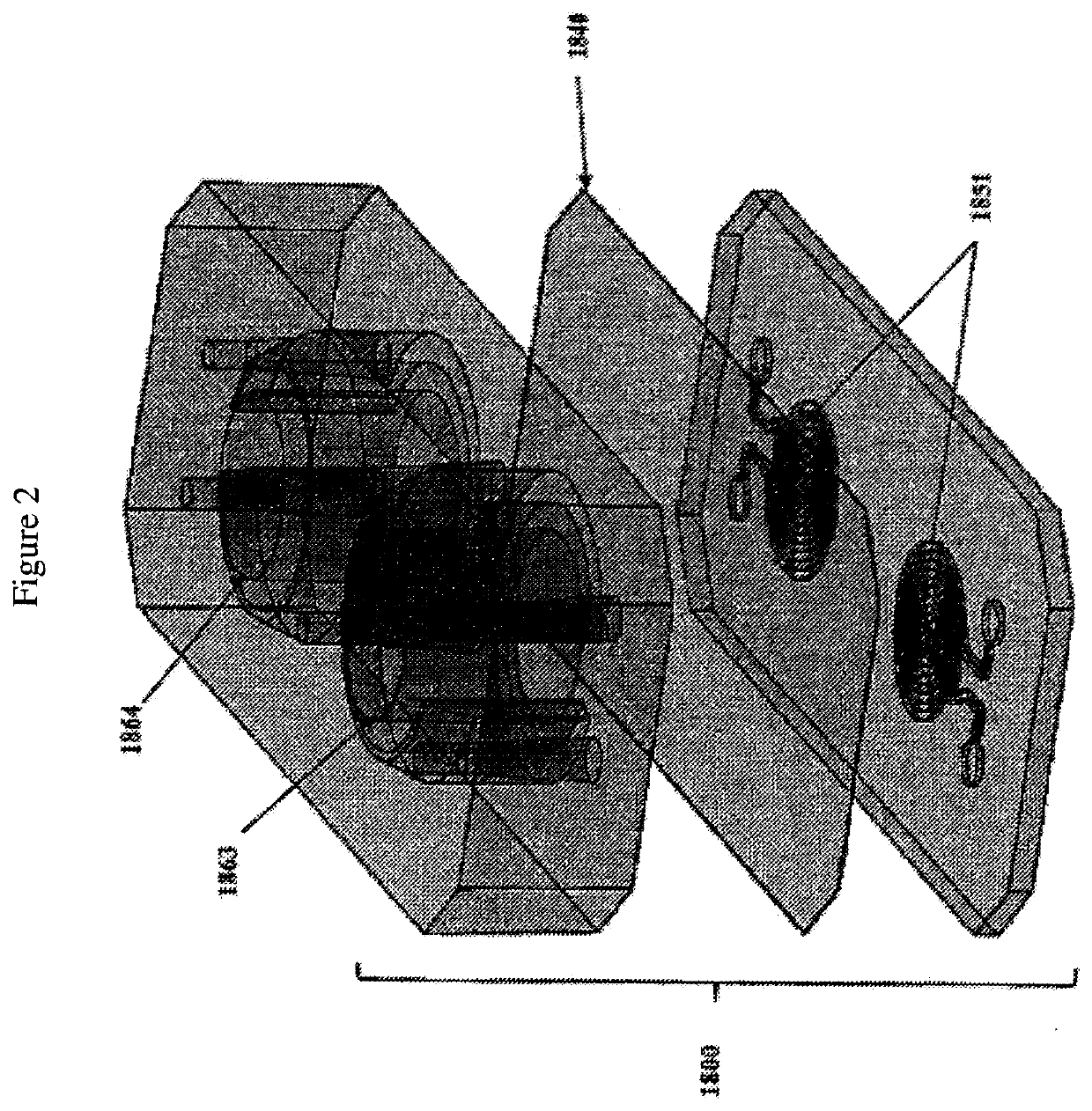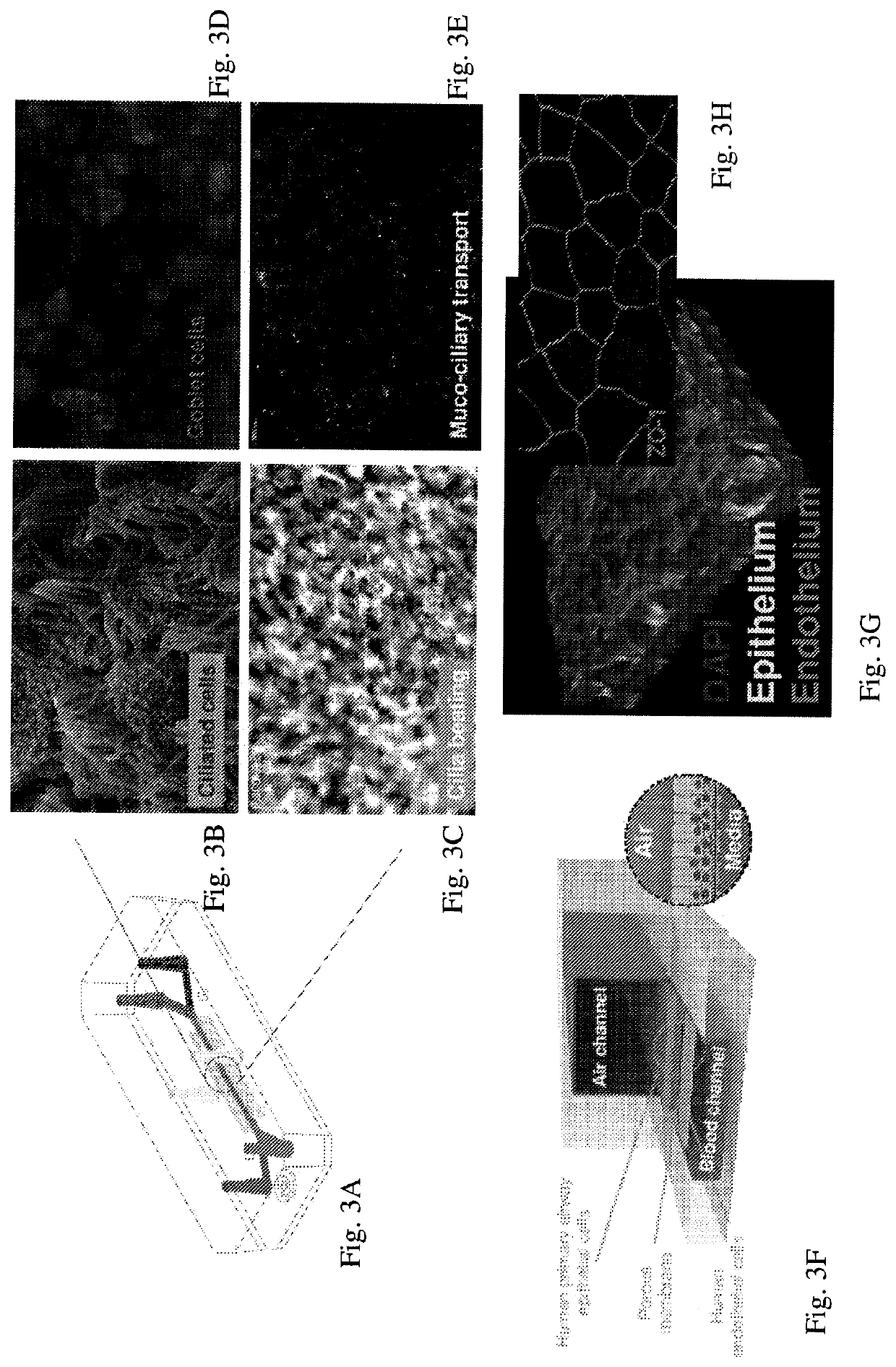Advanced pulmonary models
a pulmonary model and advanced technology, applied in the field of advanced pulmonary models, can solve the problems of unmet identification of new therapeutic target opportunities, unmet identification of advanced pre-clinical models, and inability to further elucidate the underlying contribution of asthma exacerbations (and attacks) in humans
- Summary
- Abstract
- Description
- Claims
- Application Information
AI Technical Summary
Benefits of technology
Problems solved by technology
Method used
Image
Examples
example a
iating Stem Cells into Lung Cells on-Chip.
[0339]Exemplary stem cells for use in seeding chips include but are not limited to stern cell sources described herein, including organoids derived (i.e. created) starting from one or more cell types, including but not limited to primary lung tissues, primary cells; stern cells; embryonic stem cells (ESCs); or induced pluripotent stem cells (iPS cells), or other cells as described herein. iPSC organoids may be known as tracheospheres, bronchospheres, and pneumospheres (or alveolospheres), etc., according to the lung or respoiratory tissue they most closely represent.
[0340]As another example, a microfluidic chip as described herein, may be seeded by cells that were partially differentiated, i.e. not yet tenninally differentiated, e.g. as one or more populations comprising SOX17+ / FOXA2+, SOX2+ / FOXA2+, NKX2-1+, SOX9+ distal progenitor cells, etc., for undergoing further differentiation stages on-chip, resulting in terminally differentiated stem...
example 1
[0365]A Microfluidic Airway-on-Chip Enables Physiological Differentiation of Human Airway Epithelial Cells.
[0366]One embodiment of an Airway-Chip was designed to study human respiratory diseases where the epithelium plays a central role (e.g., Chronic Obstructive Pulmonary Disease (COPD)). One embodiment of a microfluidic Airway-on-Chip, described herein, enables physiologically relevant differentiation of human airway epithelial cells. For one example, human primary airway cells cultured in a microfluidic Airway-on-Chip differentiate into epithelium, and in cell compositional ranges similar to in vivo airways, e.g. ciliated epithelial cells (approximately 20-30%), Goblet cells (approximately 10-20%) and basal cells (approximately 20%). In general, goblet cells refer to column-shaped cell, found in the respiratory and intestinal tracts, which secrete gel-forming mucins, as major components of mucus. In general, basal cells refer to a type of cell in the innermost layer of an epithel...
example 2
[0371]Human Rhinovirus Replicates and Induces Damages to the Epithelium in the Microfluidic Airway-on-Chip.
[0372]This example shows the results of an exemplary respiratory viral infection damaging airway cells in one embodiment of a microfluidic Airway-on-Chip.
[0373]An exemplary virus, Human rhinovirus 16 (HRV16: A16 or type 16, referring to a single stranded RNA virus), in capsid form, was added at a multiplicity of infection of 2 to the upper channel and incubated at 33° C. for 3 hours. Infected chips (n=3) were washed apically (upper channel) daily and replicating virus in the wash fluid was quantified. HRV16 Titer (Log 10 TCID 50 / mL) vs time post infection (hours). TCID50 refers to a tissue culture infectious dose, which will infect 50% if the cells in a monolayer challenged with the viral inoculum.
[0374]The majority of virions produced by infected cells were released from the cells over 6 days, with high amounts of virions released by infected cells within 24 hours. See, FIG. 4...
PUM
| Property | Measurement | Unit |
|---|---|---|
| concentration | aaaaa | aaaaa |
| time | aaaaa | aaaaa |
| velocity | aaaaa | aaaaa |
Abstract
Description
Claims
Application Information
 Login to View More
Login to View More - R&D
- Intellectual Property
- Life Sciences
- Materials
- Tech Scout
- Unparalleled Data Quality
- Higher Quality Content
- 60% Fewer Hallucinations
Browse by: Latest US Patents, China's latest patents, Technical Efficacy Thesaurus, Application Domain, Technology Topic, Popular Technical Reports.
© 2025 PatSnap. All rights reserved.Legal|Privacy policy|Modern Slavery Act Transparency Statement|Sitemap|About US| Contact US: help@patsnap.com



